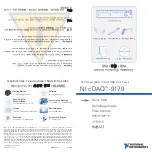
4-33
Cisco CRS Carrier Routing System 4-Slot Line Card Chassis Installation Guide
OL-10971-10
Chapter 4 Installing and Removing SFCs, RPs, MSCs, FPs, LSPs, PLIMs, and Associated Components
How to Install or Remove an MSC, FP, or LSP
Installing an MSC, FP, or LSP
This section describes how to install an MSC, FP, or LSP line card in the Cisco CRS 4-slot line card
chassis. For more detailed information on line cards refer to the
Cisco CRS Carrier Routing System
4-Slot Line Card Chassis System Description
.
The line cards are Layer 3 forwarding engines in the Cisco CRS routing system. A line card can be paired
with different types of physical layer interface modules (PLIMs) to provide a variety of interfaces.
There are three versions of the MSC: The original version (CRS-MSC), Version B (CRS-MSC-B), and
the CRS-MSC-140G version. .
There are two versions of the FP: The original version (CRS-FP40) and the FP-140 version
(CRS-FP-140). Both versions of the card provide the same functionality, except that the FP-140 provides
140 Gbps capability.
There is one LSP: CRS-LSP.
Caution
MSC-140G and FP-140 line cards should only be paired with 20-port and 14-port 10-GE XFP PLIMs
and 1-port 100-GE CFP PLIMs. The MSC-40 and FP40 line cards should not be paired with 20-port and
14-port 10-GE XFP PLIMs or 1-port 100-GE CFP PLIMs.
The MSC-40 line card can be paired with all previous PLIMs. The FP40 line card can only be paired
with a subset of PLIMs. See the release notes for details.
A line card fits into any available MSC slot and connects directly to the midplane. If you install a new
line card, you must first remove the MSC impedance carrier from the available slot.
Figure 4-20
shows the CRS-MSC-140G MSC. The other MSC, FP, and LSP cards are similar in
appearance.
Note
If your Cisco CRS 4-slot line card chassis uses a Cisco CRS SIP-800, refer to the “Installing and
Removing a SIP” chapter in the
Cisco CRS SIP and SPA Hardware Installation Guide
on
www.cisco.com.







































